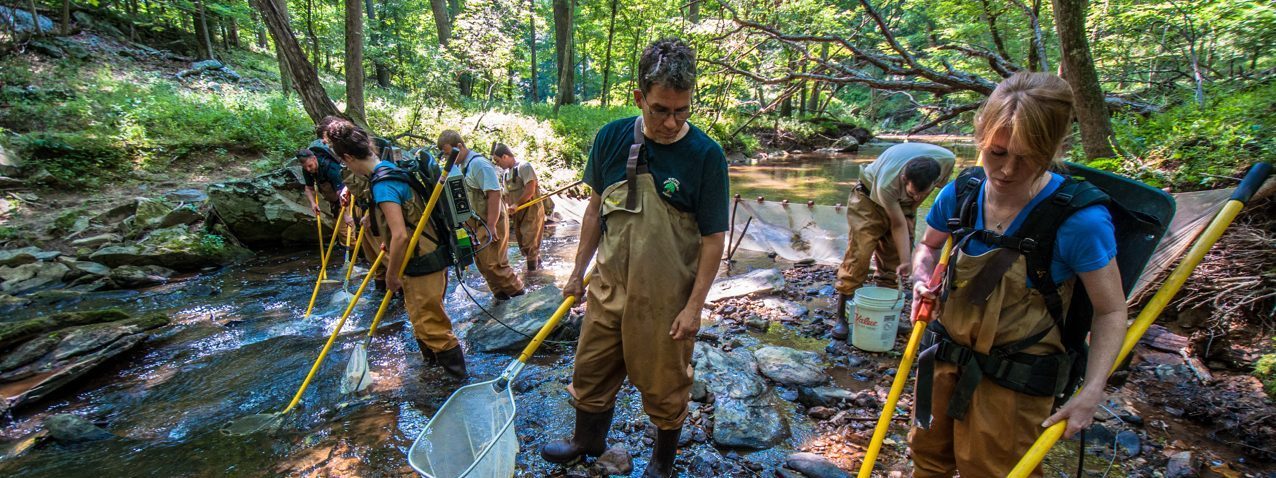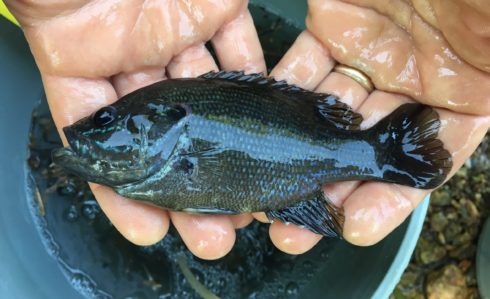
Keeping our streams healthy
Clean streams and healthy watersheds provide valuable ecosystem services that humans and wildlife depend on for survival. For most of us in Montgomery County, surface waters like the Potomac River are a primary source of drinking water. Thousands of miles of Montgomery County streams drain to the Potomac, Anacostia, and Patuxent Rivers. It is therefore vital to not only keep these waters clean but to monitor these important resources to understand how streams may be changing or responding to various pressures, including those of human activities (e.g. development).
Streams are constantly in flux, so simply analyzing water chemistry reduces our understanding of the quality of that water to a snapshot in time. Only by studying the organisms living in the stream and the ecosystem structure they create are we able to determine the health of a stream over the long term. Benthic macroinvertebrates (aquatic insects), fish, and stream salamanders are some of the most useful indicators of water quality. These organisms are studied annually by Montgomery Parks in streams across Parkland.
Monitoring the health of our streams
Assessing the insects and fish that are present in a stream and understanding which types are more sensitive or tolerant to pollution and disturbance provides an understanding of the health of the stream. Data collected from aquatic insects and fish sampling are analyzed to generate an Index of Biological Integrity (IBI). The numeric IBI score corresponds to a narrative rating (Excellent, Good, Fair, Poor) of stream health. Collected data are pooled with data gathered by the Montgomery County Department of Environmental Protection to provide a more comprehensive understanding of stream conditions across the entire County.

The results of Parks’ stream monitoring efforts support a wide variety of resource management needs across both park and planning domains, allowing for informed and responsible decisions appropriate to development or parkland acquisition. Emerging trends in biological health within developing watersheds can also help to target stormwater management opportunities where they are needed the most. In addition to the general watershed monitoring program, targeting specific monitoring sites allows for the assessment of: stream restoration and other stormwater management projects, emergency infrastructure failures, significant development projects, resources being considered in both area and park master plans, and parks where sensitive or high-quality water resources have been identified (i.e. Special Protection Areas, Best Natural Areas, and Biodiversity Areas).